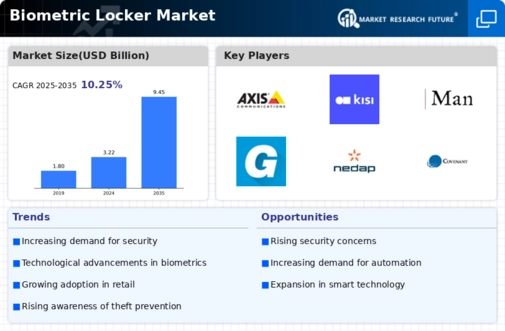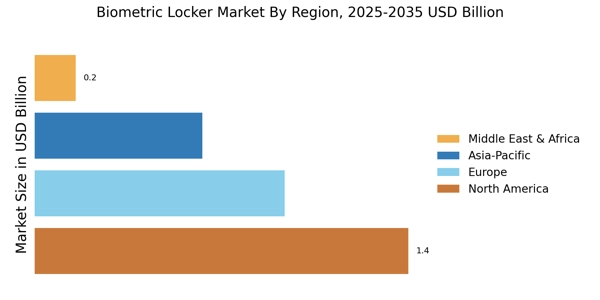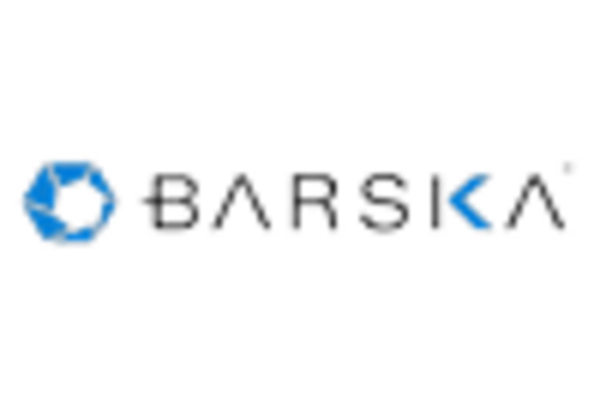Rising Security Concerns
In an era marked by heightened security concerns, the Biometric Locker Market is witnessing increased demand for secure storage solutions. Organizations and individuals alike are prioritizing safety, leading to a shift from traditional locking mechanisms to biometric systems. The need for enhanced security is underscored by statistics indicating that theft and unauthorized access incidents have risen significantly in recent years. As a result, biometric lockers, which offer advanced security features, are becoming a preferred choice for safeguarding valuable assets. This trend is expected to continue, as consumers increasingly recognize the importance of investing in reliable security solutions.
Integration with Smart Technologies
The integration of biometric lockers with smart technologies is transforming the Biometric Locker Market. As the Internet of Things (IoT) continues to expand, biometric lockers are being designed to connect with smart devices, enabling remote access and monitoring. This integration allows users to manage their lockers through mobile applications, enhancing convenience and control. Market data suggests that the smart locker segment is anticipated to grow significantly, driven by the increasing adoption of smart home technologies. This trend not only improves user experience but also positions biometric lockers as a modern solution for secure storage in various settings.
Regulatory Compliance and Standards
Regulatory compliance is becoming a critical driver for the Biometric Locker Market. As governments and regulatory bodies establish stringent security standards, organizations are compelled to adopt biometric solutions to meet compliance requirements. This is particularly evident in sectors such as finance and healthcare, where data protection regulations mandate robust security measures. The increasing emphasis on compliance is likely to propel the adoption of biometric lockers, as they provide a reliable means of safeguarding sensitive information. Market forecasts suggest that compliance-driven demand will significantly influence the growth trajectory of the biometric locker market in the coming years.
Growing Demand in Commercial Sectors
The Biometric Locker Market is witnessing a notable increase in demand from commercial sectors, including retail, hospitality, and corporate offices. Businesses are increasingly recognizing the value of biometric lockers for employee and customer security. For instance, retail stores are adopting biometric lockers to protect merchandise and enhance customer experience. Market analysis indicates that the commercial segment is expected to account for a substantial share of the biometric locker market, driven by the need for efficient and secure storage solutions. This trend reflects a broader shift towards integrating advanced security measures in business operations.
Technological Advancements in Biometric Systems
The Biometric Locker Market is experiencing a surge in technological advancements, particularly in biometric recognition systems. Innovations such as facial recognition, fingerprint scanning, and iris recognition are becoming increasingly sophisticated. These advancements enhance the accuracy and speed of biometric authentication, making lockers more secure and user-friendly. According to recent data, the biometric technology sector is projected to grow at a compound annual growth rate of over 20% in the coming years. This growth is likely to drive the adoption of biometric lockers across various sectors, including education, healthcare, and corporate environments, as organizations seek to improve security measures and streamline access control.

















Leave a Comment